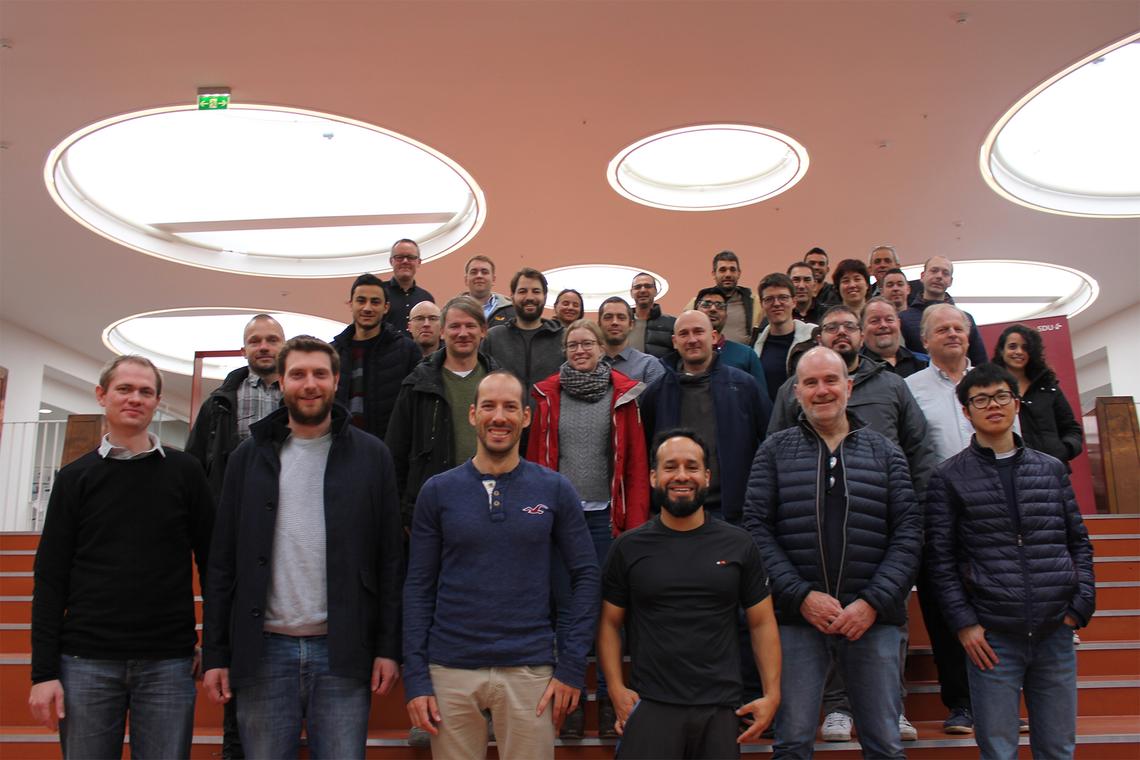Report of Meeting: Site Specific Weed Management
Posted on March 12th, 2020 on 13:15:50 by Ran Nisim Lati

The Working Group Site Specific Weed Management (SSWM) had a meeting on 30 Oct and 1 Nov 2019 hosted by the University of Southern Denmark (USD), located in Odense. Below you can find the report of...
The European Weed Research Society (EWRS) Working Group Meeting on Site Specific Weed Management (SSWM) was held between 30 October to 1 November 2019, in the University of Southern Denmark (USD), located in Odense, Denmark. Thirty two participants attended the meeting, and were consist of researchers, students, farm advisors and members of the industry. Participants were from seven countries including: Denmark, Germany, Norway, Greece, Ireland, Spain and Israel.
The first day was dedicated to oral presentations and talks presented the latest progresses in the field of SSWM. The main two aspects that were addressed during this day were weed detection using advanced algorithms and image-data analysis approaches such as: deep learning and machine learning. The other aspect was employment of UAV for data acquisition, opportunities and limitations. For example, presentations demonstrated advanced deep learning and convolutional neural network methodologies for weed detection in maize and sugarbeet, where images were acquired from a close range. Other presentations showed how UAV can effectively be used for weed mapping in winter cereal and mapping the noxious weed Vulpia myuros. Another novel aspect that was discussed during this day was data fusion and how integration of morphological and spectral data that were acquired from different sensors can promote SSWM. Additionally, more applicative aspects were discussed such as the employment of advanced sensors and image processing methodologies to improve weed harrowing and to improve the sustainability of grassland management. Lastly, SSWM in the perspective of farm advisors was presented, and provided us very important insights in the actual implementation of SSWM methods. Important points regarding the bottlenecks for adoption of SSWM methods by farmers were discussed.
During the second day more studies were presented, however, the main part of the day was dedicated to a special tutorial workshop on how to map weed density with your mobile phone and QGIS. Additionally, we had a visit in the robotic lab of the university. A group discussion was held, aimed to address the main professional SSWM issues raised during the meeting and also to answer different questions from the EWRS administration office (e.g., the continuation of the working group and the management of the working group). Main points/concerns made by participants were regarding the need to share image-data to improve current detection methods, and reasons that hinder adoption of SSWM by farmers. Also, ways of actions that can be taken to overcome the current limitation were raised by the participants.
The main conclusions made by the members were regarding the importance of the continuation of the SSWM WG due to the relevance of this subject and the large number of members that participant in the meeting. Technology will keep on developing and being a major part of agriculture, thus, this WG will be also relevant in the future and it is necessary to continue the activity. This statement was agreed and supported by all participants. New objectives for the WG were determined and included: facilitating automated weed species identification and phenotyping, involve companies and stakeholders in implementing SSWM methodologies and documenting the contribution and benefits from SSWM. We decided that future activities will include more workshops, collaborated papers and image-data sharing infrastructures. The potential outputs of these activities will be budgets for image-data sharing infrastructures, data sharing and receiving of feedback, and sharing of papers and presentations. Lastly, all members agreed about the future management of the working group with Svend Christensen as chairman and Ran Lati as deputy chairman for another year.
The third day was dedicated for a field trip in local onion farm. We had a presentation of an advanced new autonomous robot that can be employed for various weed control applications. The robot is basically an autonomous platform that any control tool can be mounted on. Additionally, any sensor can be mounted on the robot, and therefore, it can also be used as phenotyping platform. These kinds of robots are the future of agriculture, thus, it was of great importance to show their performance and potential.
2028 x viewed | 46 Likes -
Message to the author
Filter by theme
Filter by Working Group
How can I submit a post?
We would like to welcome you as a contributing author for the EWRS blog. Please contact the Communication Officer, Camilla Moonen. She can give you writing access to the blog. After that, you can start writing articles for the blog, from the 'My Account page'. More information can be found on the "How to use the Blog page".
